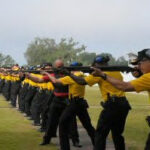Understanding the regulations that govern uniforms is crucial for members of the Civil Air Patrol (CAP). Among the various publications that outline CAP standards, Cap Uniform Manual 39-1 stands out as the definitive guide for dress and appearance. This manual provides comprehensive instructions and guidelines, ensuring that all members present a sharp, professional, and unified image.
Civil Air Patrol regulations are meticulously documented to maintain order, standards, and professionalism within the organization. These regulations cover a wide array of topics, from conduct and procedures to the specifics of uniform wear. For anyone in CAP, familiarity with these documents is not just recommended—it’s essential. Among these, Cap Uniform Manual 39-1 is particularly important as it directly impacts the daily presentation and identity of every member.
Decoding CAPR 39-1: Civil Air Patrol Uniform Regulation
Cap Uniform Manual 39-1, officially titled “Civil Air Patrol Uniform Regulation,” is the go-to resource for understanding everything about CAP uniforms. It meticulously details what uniform items are authorized, how they should be worn, and when each uniform is appropriate. This manual ensures that every CAP member, whether cadet or senior member, understands the standards of dress expected of them.
Key Areas Covered in Manual 39-1
This comprehensive manual covers a range of critical aspects concerning CAP uniforms:
- Different Uniform Types: CAP recognizes several uniform types, mirroring those of the U.S. Air Force. Manual 39-1 clearly delineates each uniform, such as the service dress uniform, the Airman Battle Uniform (ABU), and various field and specialized uniforms. It specifies the components of each, ensuring members know exactly what is required for each type of dress.
- Insignia and Accoutrements: Correct placement and type of insignia are vital for conveying rank and affiliation. Cap Uniform Manual 39-1 offers detailed diagrams and instructions on how to properly affix insignia, name tags, ribbons, and other uniform accoutrements. This attention to detail ensures uniformity and avoids misrepresentation.
- Grooming Standards: Uniform regulations extend beyond just clothing to encompass personal grooming. The manual outlines standards for haircuts, shaving, jewelry, and cosmetics, ensuring a professional and military-appropriate appearance for all members.
- Civilian Clothing Policy: While CAP is known for its uniforms, there are occasions where civilian attire is permitted or required. Manual 39-1 clarifies when civilian clothing is appropriate and sets standards for what constitutes acceptable civilian dress during CAP activities.
- Uniform Combinations and Seasonal Wear: Regulations adapt to different environments and seasons. The manual provides guidance on appropriate uniform combinations for various activities and weather conditions, ensuring comfort and functionality without compromising standards.
Accessing and Utilizing Cap Uniform Manual 39-1
Staying up-to-date with Cap Uniform Manual 39-1 is straightforward as it is available online. CAP members can easily access the latest version to ensure they are adhering to the most current regulations. Regularly reviewing this manual is advisable, especially when uniform updates or changes are announced.
[Insert relevant image from original article here – if no relevant image, consider a generic image of a uniform or manual. If no image is suitable, skip image insertion and proceed.]
Understanding and adhering to Cap Uniform Manual 39-1 is more than just following rules; it’s about upholding the standards and traditions of the Civil Air Patrol. By ensuring every member is well-versed in these uniform guidelines, CAP maintains its distinguished presence and professional image. For anyone involved in CAP, from new recruits to seasoned officers, Cap Uniform Manual 39-1 is an indispensable resource.


